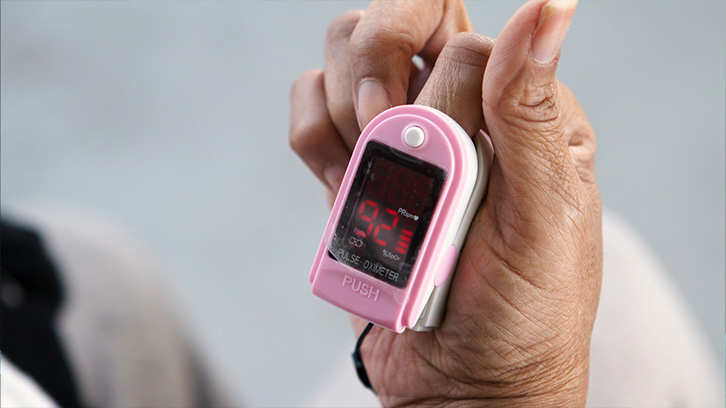Study Adds to Research Indicating Bias in Pulse Oximetry Readings

Pulse oximeter readings are an estimate of the oxygen saturation in a patient’s blood and are a helpful tool in monitoring oxygen saturation in individuals who experience shortness of breath. The COVID-19 pandemic has brought new attention to the accuracy of pulse oximeters.
Recent data published in the Journal of American Medicine shows that emergency room or hospitalized patients with COVID-19 who had darker skin tones more frequently had inaccurate pulse oximetry measurements when compared to White individuals. When pulse oximetry measurements were compared with arterial blood gas oxygen measurements, the study found that the pulse oximetry measurements of Asian, Black and Hispanic patients were more likely to be inaccurate. These inaccurate measurements led to delayed treatment when the arterial blood oxygen level was actually lower than that indicated by the pulse oximetry reading. In addition, some patients were not recognized as eligible for COVID therapies.
The US Food and Drug Administration (FDA) will convene a public meeting to discuss the available evidence about the accuracy of pulse oximetry.
Below are helpful tips from our previous blog post (April 17, 2021) on this topic:
Once pulse oximeter readings are less than 80%, the accuracy of the reading is decreased. Moving forward, the FDA will require that individuals with darker skin tones are included in the review and approval of pulse oximeter devices. For more on why this is important, see the PFF’s recent webinar, Diversity in Research: Benefits for All.
Here are some helpful tips from the FDA in using pulse oximetry:
- Follow the manufacturer’s instructions for use.
- When placing the oximeter on your finger, make sure your hand is warm, relaxed, and held below the level of the heart. Remove any fingernail polish on that finger.
- Sit still and do not move the part of your body where the pulse oximeter is located.
- Wait a few seconds until the reading stops changing and displays one steady number.
Write down your oxygen levels with the date and time of the reading so you can easily track changes and report these to your health care provider.
If you are using a home oximetry device, you can bring it to your next visit with your health care team and compare the readings from your device to the ones used at the clinic or hospital. This can provide valuable information on whether your home device has different readings, and your provider can guide you on next steps.
Most importantly, if something does not feel right, contact your health care provider, even if your readings have not changed.
Some symptoms of low oxygen saturation include bluish coloring in the face, lips, or nails; shortness of breath; restlessness; chest pain or tightness; and fast heart rate. If you are experiencing new or worsening symptoms, you should contact your health care provider.
You can find even more information on pulse oximeters and oxygen concentrators on the FDA website.
